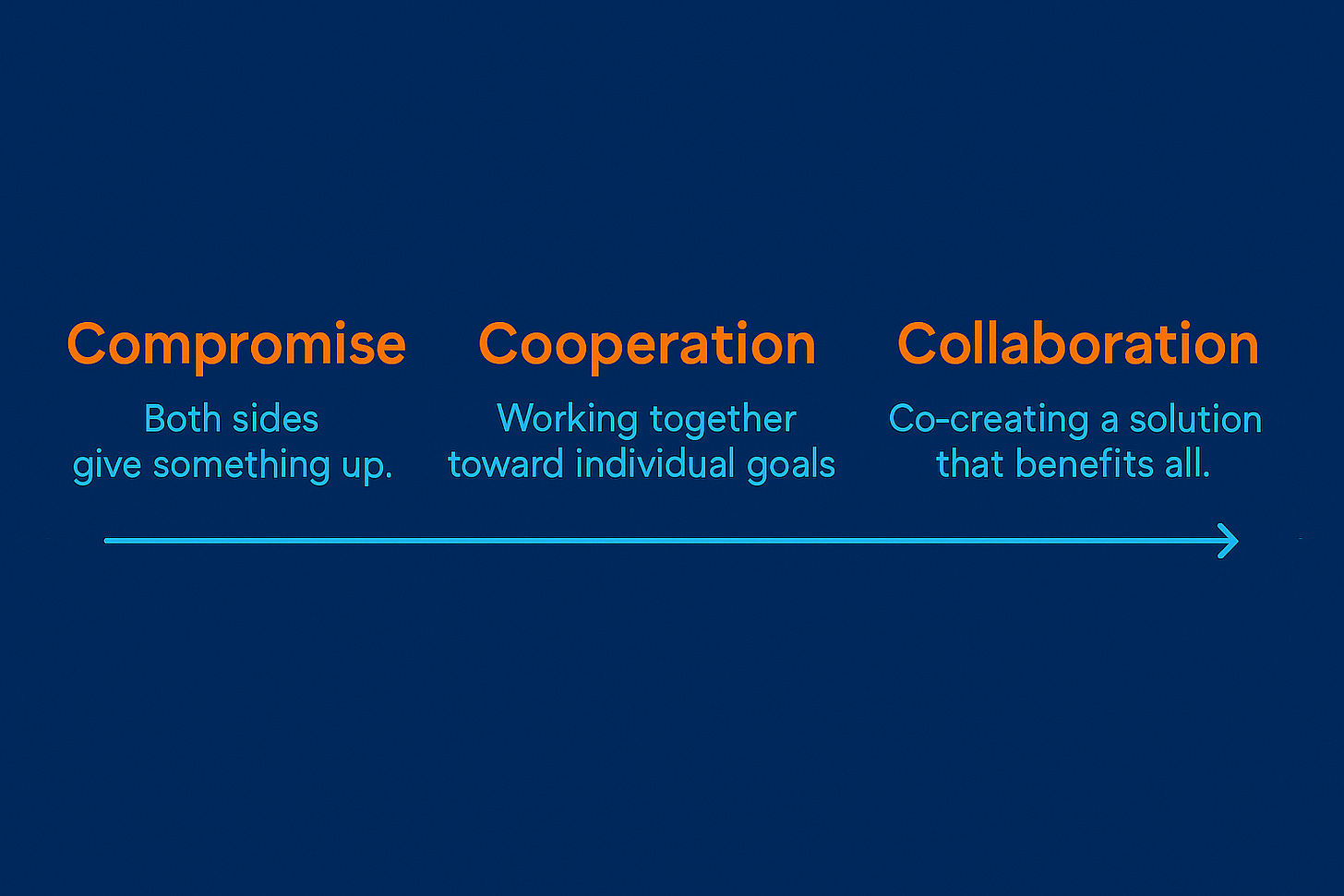If you’ve ever received feedback that you need to be more collaborative, I will show you how to do that today. Best of all, you can instantly become more collaborative using the “two magic sentences.”
Remember that we are looking at two variables regarding conflict and communication.
Concern for self: "My needs" or "I win."
Concern for the other: "Your needs" or "You win."
The collaborative style demonstrates high concern for self and high concern for the other.
The collaborating style is the opposite of the avoiding style because it addresses both my and your needs, so it is a “win/win” style. (Remember that the avoiding style is "lose/lose" because it avoids both my and your needs.)
To help clients become more collaborative, I often share the “two magic sentences.”
These sentences immediately shift you into a collaborative style because you will address both your needs and the other person's needs. Here's how that goes:
“Here’s what I need from you. What do you need from me to do that?”
Or if you are feeling generous:
“What do you need from me? Here’s what I need from you for me to do that.”
Use these sentences anytime you feel “stuck.”
The Pros of Collaboration:
“I win. You win.” That pretty much sums it up!
Ideal for situations where both results and relationships are prioritized
The Cons of Collaboration:
This style takes time and resources to implement. If you need to be assertive with a quick solution, the competing or compromising style is better suited.
Leaders who always strive for this can easily exhaust themselves because it is not always an option.
Sometimes, this style is more of an ideal to strive for rather than an objective reality you can achieve. Therefore, you may want to think of collaboration as a linear continuum with compromise at one end (where we both win some and we both lose some) and perfect collaboration at the other (where we both get our needs fully met).

For this week’s small experiment:
Use the two magic sentences and see how it impacts your relationships at work and home.
The most effective leaders can intentionally shift from one style to another and match the moment as needed. If you want to improve your own or your team’s




